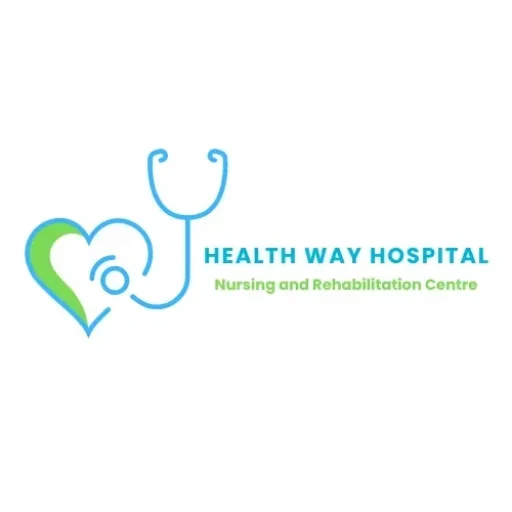Migraine Treatment
Migraine is more than severe headaches. It causes an annoying, throbbing pain on one side of your head that can keep you awake for days. Movement, light, sound, etc. fatigue, nausea, blurred vision, irritability, etc. causes symptoms. A doctor can help you manage your symptoms to avoid migraines for the rest of your life.
What is Migraine?
Migraine is a severe headache that causes headache, a headache on one side of your head. A migraine headache usually lasts four hours, but can last several days. This type of headache may get worse due to:
- Physical activity.
- Bright lights.
- Loud noises.
- Strong odors.
Migraine headaches are devastating. They can interfere with your daily life and affect your ability to fulfill your personal obligations and responsibilities. Migraine treatment can help you manage migraines.
Role of Rehabilitation Centers for Migraine Treatment
- Education: The clinic provides education about migraine to help patients understand migraine causes, symptoms and treatment methods.
- Physical Therapy: Rehabilitation centers offer physical therapy services to relieve muscle tension and posture problems that may cause migraine
- Medication Management: The rehabilitation center is a clinic staffed by doctors who oversee medication management to ensure the use of anti-migraine medications.
- Holistic approach: These centers may include complementary treatments such as acupuncture, biofeedback and relaxation techniques that complement traditional Migraine treatments.
- Cognitive Behavioral Therapy (CBT): Uses CBT techniques to help patients develop coping strategies, manage stress, and change negative thoughts associated with migraines.
- Lifestyle changes: They provide patients with guidance on lifestyle changes such as stress reduction, nutritional changes and sleep habits. Reduce the frequency and severity of migraines.
Medications Management
Migraine medications work best when taken at the first onset of a migraine (when migraine symptoms appear). Medicines that can be used for migraine relief in treatment are:
- Pain relievers: Over-the-counter analgesics or analgesics include aspirin or ibuprofen (Advil, Motrin IB, etc.). If taken for too long, it causes extreme headaches, stomach pain, and bleeding
- Triptans: Medications such as sumatriptan (Imitrex, Tosymra) and rizatriptan (Maxalt, Maxalt-MLT) are used to treat migraines because they block pain pathways in the brain.
- Dihydroergotamine (Migranal, Trudhesa): hese medications involve nasal sprays or injections and are taken soon after migraine symptoms begin and are best for migraines that last longer than 24 hours. Side effects may include migraine-related vomiting and nausea.
- Lasmiditan (Reyvow): This new oral tablet is approved for the treatment of migraine with or without aura. In clinical studies, lasmiditan improved headache.
- Opioids: : For people who cannot take other migraine medications, narcotic opioids may be helpful. Because they can be addictive, they are usually only used when other treatments have failed.
- Anti-nausea medication: This medication may help if your migraine is accompanied by an aura with nausea and vomiting. Anti-nausea medications include chlorpromazine, metoclopramide (Gimoti, Reglan), or prochlorperazine (Compro, Compazine). These are usually taken with antibiotics.
Lifestyle modifications
Lifestyle modifications play an important role in migraine treatment. Regular sleep patterns, adequate fluid intake, and stress-reduction techniques such as yoga or meditation can help prevent attacks. Because there are many factors that contribute to migraine disorders, Lifestyle modifications can impact patient outcomes. It will also be beneficial to stay away from foods such as caffeine, alcohol and processed meat and keep regular meal times. Regular exercise and weight control are additional elements of migraine management.
- Diet changes: A healthy diet is important for migraine. This includes avoiding foods like aged cheese, processed meat, and MSG, emphasizing fluid intake, and eating regularly to keep blood sugar levels stable.
- Stress Management: Participating in stress reduction techniques such as mindfulness, yoga or deep meditation – breathing techniques can help reduce the frequency and severity of migraines by reducing tension and promoting relaxation.
- Exercise regularly: Moderate, regular physical activity not only improves your overall health but also reduces your risk of migraines. However, it is important to avoid severe or sudden pain that can cause migraine.
- Sleep Hygiene: Establishing a consistent sleep schedule, adopting good sleep habits, and providing a comfortable sleep environment can reduce migraine cases because poor sleep occurs as a result.
Restorative Interventions
- Physical therapy: Physical therapy techniques can help temporarily migraine relief pain during migraines. These tips are especially helpful if you use them at the beginning of a migraine.
- Biofeedback: Biofeedback appears to be effective in treating migraines. This relaxation technique uses special tools to teach you to monitor and control certain stress-related body responses, such as muscle tension.
- Cognitive behavioral therapy: Cognitive behavioral therapy may be helpful for some migraine sufferers. This type of psychology teaches you how your behaviors and thoughts affect the way you perceive pain.
Patient Support in Rehabilitation Centers
Patient support for migraine treatment in the clinic includes well-designed methods that address the physical, psychological and lifestyle factors that contribute to migraine attacks. Migraine treatment plans may include medication, stress-reduction strategies, dietary changes, and relaxation therapy.
Additionally, counseling and education enable patients to better understand their condition and use effective coping strategies. By creating a supportive environment, healthcare providers play an important role in improving migraine management and improving patients’ quality of life.
